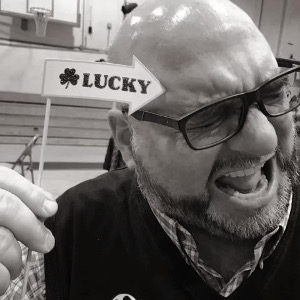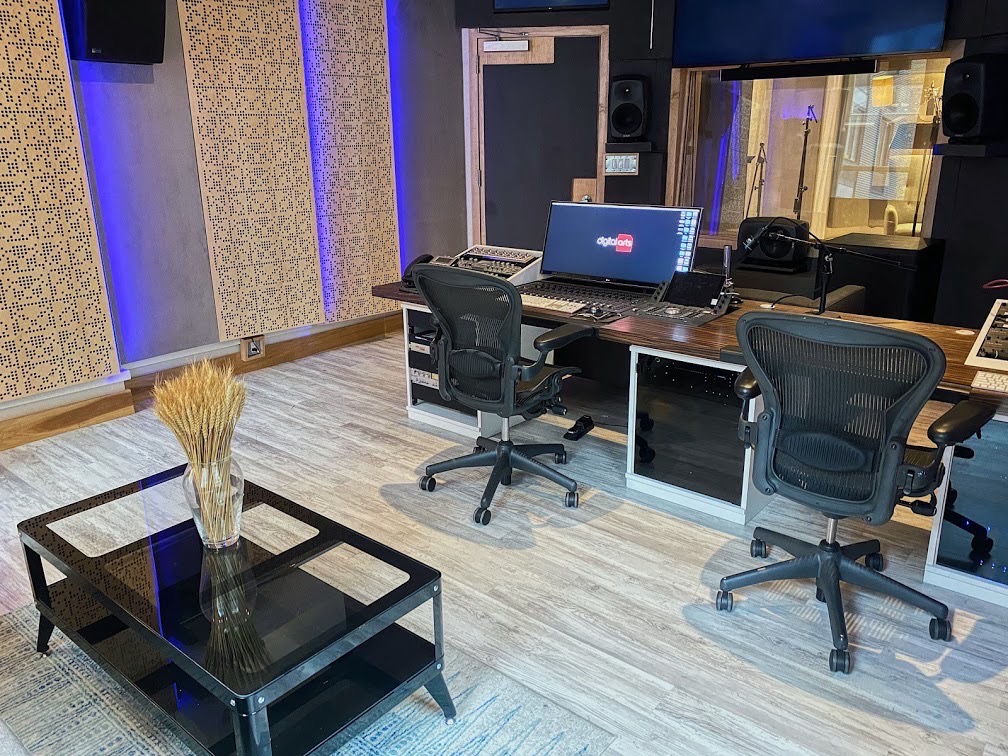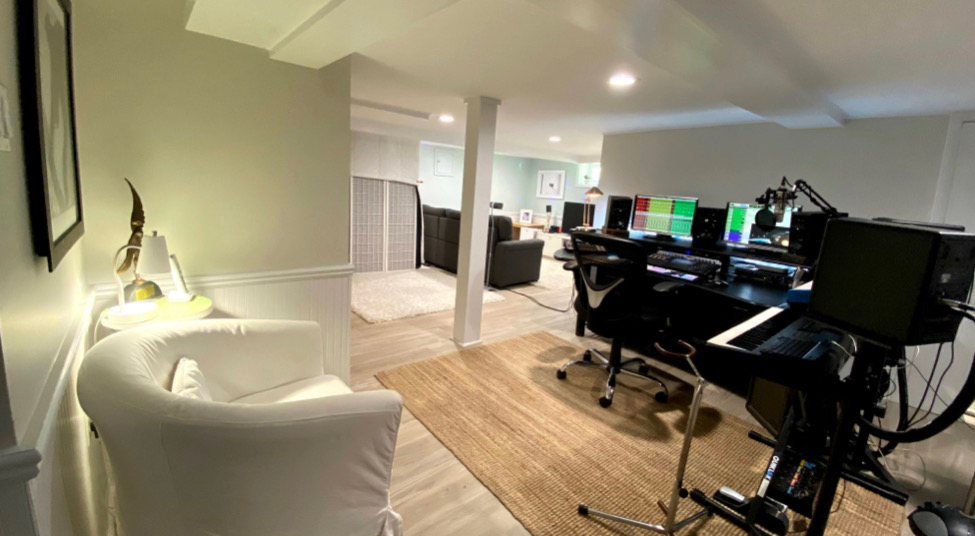How to Produce Better Podcast Audio: Secrets from the Metaverse and More
Congratulations! You’ve discovered a goldmine for how to improve podcast audio.
The invaluable insights come courtesy of Frank Verderosa, an elite audio post pro, mixer, sound designer, and composer. A graduate of the SUNY Fredonia Tonmeister program who knows the physics of great sound, Verderosa spends his days working out of Digital Arts in NYC, and particularly loves their new Dolby Atmos suite. Later he burns the midnight oil in his home studio, exploring the intersection of podcasting, VR, and spatial audio, constantly pushing the boundaries of sonic technology.
In the audio post world, Verderosa’s reel includes top brands, agencies, and global campaigns including Volkswagen, Burger King, Budweiser, Crispin Porter Bogusky, McCann, Ogilvy, and VaynerMedia. He’s also recorded scores of famous voices for cartoons and animated features from Nickelodeon, Cartoon Network, and Disney. On the podcasting side, he’s been behind scores of downloads after five years of producing the popular show Gilbert Gottfried’s Amazing Colossal Podcast.
One of Verderosa’s personal projects is Everyday Odysseys, a podcast series that spotlights the fascinating backstories of heroic people who aren’t necessarily famous, including a 9/11 first responder and cancer survivor. Demonstrating that people can channel their energy in amazing ways despite daunting adversity, Everyday Odyssey episodes are filled with moments that are heartbreaking, inspirational and educational.
Crisp sound is also a part of the program. Verderosa has used his Gilbert Gottfried experience wisely, developing many best practices for a documentary style podcast that goes spatial, leveraging select recording and mixing tools – including metaverse-borne VR recording tech – for the most lifelike sound possible.
Follow along with this Q&A for terrific tech tips on how to keep things simple while getting great vocal recordings, remotely or together with guests in the studio. You’ll learn his secrets to level consistency and other podcast recording and post production moves, for sonic improvements that your listeners will notice.
If your goal is to grow your audience – for your own podcast or ones that you engineer – you’ll learn how to produce better podcast audio from this key convo.
(Editor’s Note: You can also join Frank in a free live workshop this Tuesday, April 12, 2022 for “An Evening with Source Elements: Source-Connect and so much more!” Visit here for more information and to RSVP.)
Frank, you produced Gilbert Gottfried’s Amazing Colossal Podcast for five years. What were your takeaways from that experience – the good and the bad?
The reason I had even gotten involved with Gilbert Gottfried’s Amazing Colossal Podcast was to improve the audio quality – get them away from the kitchen table and into a studio.
They had been gathering around a Blue Yeti. I put them in a booth with Sennheiser 416s’. Once that hurdle was cleared, I realized that their podcast company wasn’t actually post-mixing the episodes. So I took on that role, and eventually became the full audio producer for the show for five years.
The real hurdles were dealing with actors that were at home. I transitioned them away from phone calls to Skype calls. Skype audio isn’t great, and a lot of the guests are quite a bit older. Anyone who’s celebrated a family event over Zoom during lockdown knows how that goes.
When possible, I guided guests through the best setup we could. Headphones were a must, and that is still the case for ANY podcast. Gilbert has a very loud laugh that would echo through the guest’s laptop and back into their mic, making editing and mixing a nightmare! So we always made sure that guests had headphones.
Some would just use the ubiquitous white Apple earbuds. That’s a viable solution, except for when the guest has a beard that is constantly rubbing against it. It’s happened more than once. There are endless horror stories, despite our best efforts — everything from the guest forgetting to hit “record” on their end to hired engineers having bad mic placement.
We learned that the best quality came from having the guests in a studio whenever possible, even if it meant holding off on an interview until that was possible. It was a definite learning process for the team.
Those are great basic podcasting recording tips to start! When did you decide you would do your own podcast?
As a recording engineer handling commercials, cartoons, ADR for films, TV shows, etc…, I find myself spending lots of time in the room with great “behind-the-scenes” actors. One day I was chatting with a singer/ voice actor named Frank Simms.
I’ve known Frank my entire career. He’s one of the best and busiest in the business. But I had no idea that he had sung backup vocals on a ton of hits! He’s the voice singing and saying “Liv-ing in a material world” on Madonna’s “Material Girl”. He’s also one of the singers on David Bowie’s “Let’s Dance.” He actually toured with Bowie for [1983’s Let’s Dance-supporting] Serious Moonlight with his brother George, always on stage with Bowie.
I had been considering a podcast showcasing voice actors going back to 2010, but never quite formed the idea completely. After chatting with Frank one day, I found my focus, and began producing UnSung: The People You Don’t Know You Know! I started banking episodes with the goal of releasing it early in 2020, and then Covid hit. I really wanted ONLY in-person interviews, but that wasn’t an option, so I shelved it. I am now ramping back up and hope to start releasing some of those pre-Covid episodes soon!
How did the concept develop from there?
In the meantime, I spent a lot of “lockdown time” in places like Clubhouse, Zoom and VR meeting fascinating people both in and out of the industry. We’d end up having these intense late night chats, and I decided it would make for some compelling listening.
That gave birth to Everyday Odysseys – the title is inspired by an artist named Kae Tempest from an album I mixed for her award-winning work, Brand New Ancients. The result is more than just interviews.
They’re conversations that turn into documentaries about people you’ve never heard of – each with amazing stories or histories to share. A 9/11 hero discussing the day as well as the lingering issues 20 years later. A military veteran who has turned her MS diagnosis into several businesses and some inspirational stories. A breast cancer survivor turning a would-be tragedy into a success, and so much more.
How would you describe Everyday Odysseys’ podcast genre – is it strictly interview, audio theater style, or some of both?
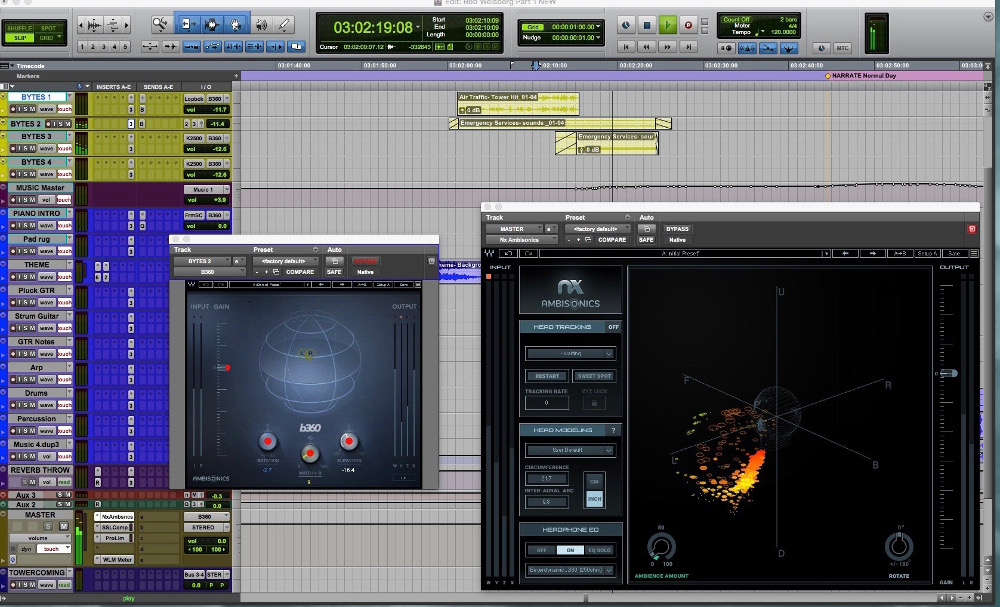
WAVES B360 gives space to the sound design, music and dialogue to put you in the middle of the episode.
It’s a bit of both. We have a conversation with very few talking points. We just chat. I go in with some ideas, but I want to keep it fresh, even if it makes for some awkward moments. I sift through it, and the story presents itself.
I edit and narrate their story as it unfolds. I’ll embellish it with sound design and my own compositions/underscores.
I’m also producing them using a mixture of technologies for a spatial audio effect that puts you in the room, with sound coming from all around you. Primarily WAVES B360 Ambisonics Encoder, but also WaveArts Panorama and WAVES Nx Surround.
I want the listener in headphones to feel like they’re in the room with us, even when the guest is across the globe to begin with! Some of the episodes are recorded in VR, where I can sit face-to-face with the guest’s avatar, and those platforms already use some spatial audio effects for directional cues. So I build on that.
Podcast Recording & Podcast Mixing Tech Tips
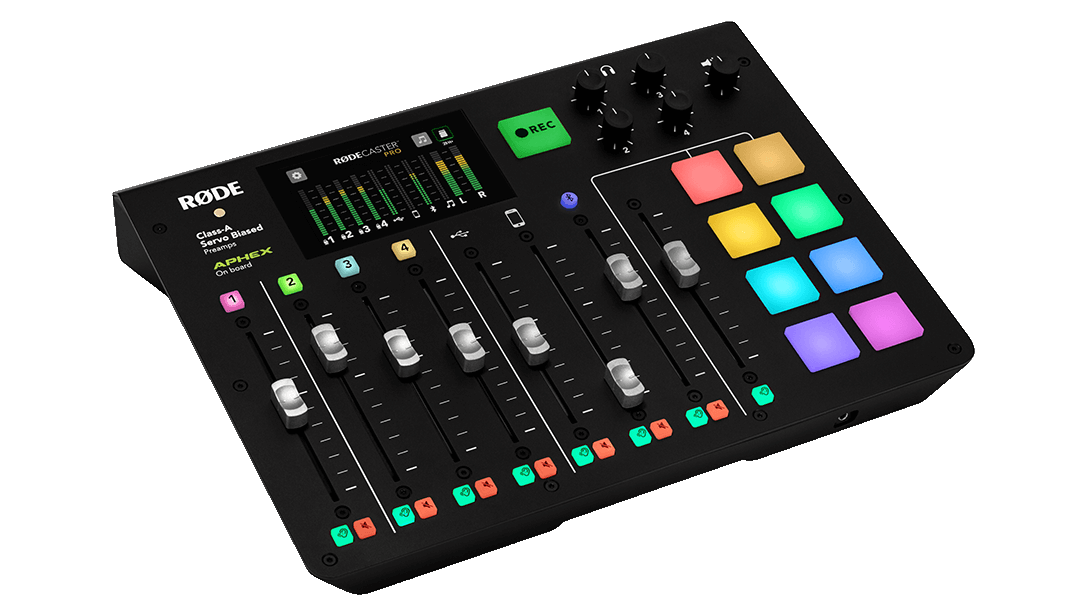
The RODEcaster Pro podcast production studio is ideal for in-person interviews. Buy it new on Sweetwater, Thomann, or Amazon. Look for deals on Reverb.
From a logistical standpoint, what kind of planning and tools were needed for selecting, booking, and scheduling guests?
It really depends on who I’m chatting with. I’ve started having people to my home studio if they’re local. I have a cozy sofa sectional, and I just bring over my RØDECaster Pro and hit “record.”
But for the most part, we’re using some combination of Source-Connect/Source-Connect Now/ Zoom and sync recording, depending on the guest. One episode might be a guest on a headset mic over Zoom. Another might be a guest with a great mic on Source-Connect.
Since I’m not dealing with celebrities who have their own firewalls and busy schedules, these interviews tend to be a bit more spontaneous… like “How’s tonight?” and GO!
What are some technical observations you’ve made by recording Everyday Odysseys?
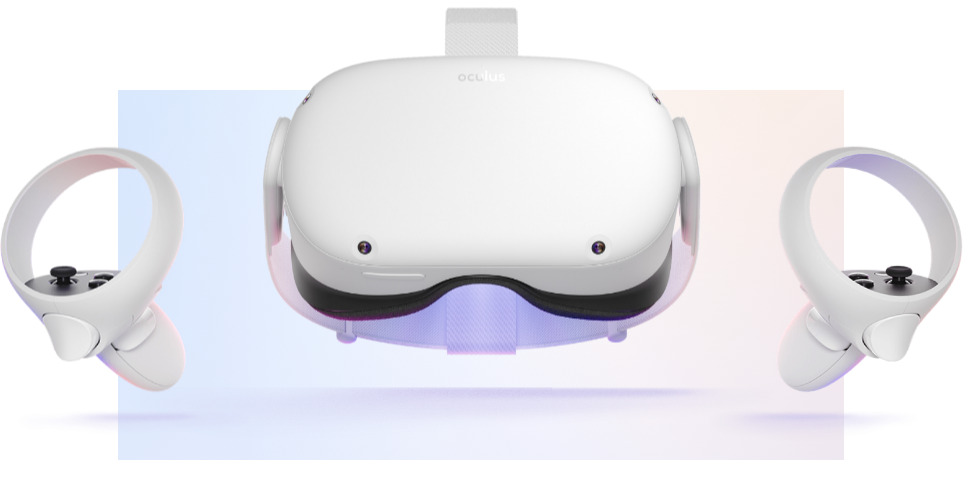
The Oculus Quest 2 VR headset’s microphone is podcast quality. Buy it new on Amazon.
The Oculus Quest 2 has a surprisingly decent mic in it – as long as the guest has it on properly and keeps it charged and/or plugged in.
I’ve had everything from in-person to quality mics over Source-Connect to just a regular phone call. It really varies depending on who I’m dealing with.
There are so many tools available that I always find a way to make it work for even the least technical people out there. And Zoom lets you record multitrack audio, so that’s always my worst-case scenario.
From there, what are some tools you use in audio post?
I use ALL THE TOOLS! iZotope’s RX suite is critical for noise removal, plosives, mouth de-clicking, etc. Waves Vocal Rider is a timesaver for keeping things level.
I also meter with Waves WLM-Meter. I can’t stand podcasts where I have to keep reaching for the volume, so I use WLM to keep things consistent throughout the episode- as well as show to show.
That was one of the things I brought to Gilbert’s show, and the fan response to the level consistency was great. It’s so worth it to spend the time on that. The binaural tools I mentioned before give the episodes space and depth for headphone listeners.
The work I do with my day job at Digital Arts in NYC is shifting toward Dolby Atmos, while the work I do at home is in 5.1 – Waves B360 was such a fun and simple solution for spatial audio. I have started mixing radio commercials for my advertising clients this way when I know they’ll be running on streaming platforms.
The first episode of Everyday Odysseys is about 9/11, and there is some intense sound design using audio from the day. I had sent a draft to a few friends to listen to, and they all had the same reaction – thinking sirens were coming from behind them. But it all added up to this visceral effect of putting you there as this hero is sharing his story. You feel it around you.
It was a hard episode to dive into for me, since it opened up 20 year-old wounds. But it’s powerful, compelling, and needed to be shared.
What are some of your primary tools for recording music and sound design?
In addition to the above, of note is the main theme music for the show. It was created with GarageBand on my iPhone while I sat at the pool! I later filled it out using Pro Tools and a host of tools from Spitfire Audio – my new favorite company. They keep releasing these libraries and I keep buying them. In addition to their orchestral tools, I even got my daughter to play flute on some of the themes!
Getting It Out There: Podcast Distribution & Marketing
These are all very helpful insights into your process, thank you! Once each episode is a wrap, what platforms did you choose for distribution, marketing, and promotion?
I am not going into this podcast with dollar signs in my eyes. Both of my projects are a labor of love. If there’s a way to monetize it later and an audience willing to listen, then great!
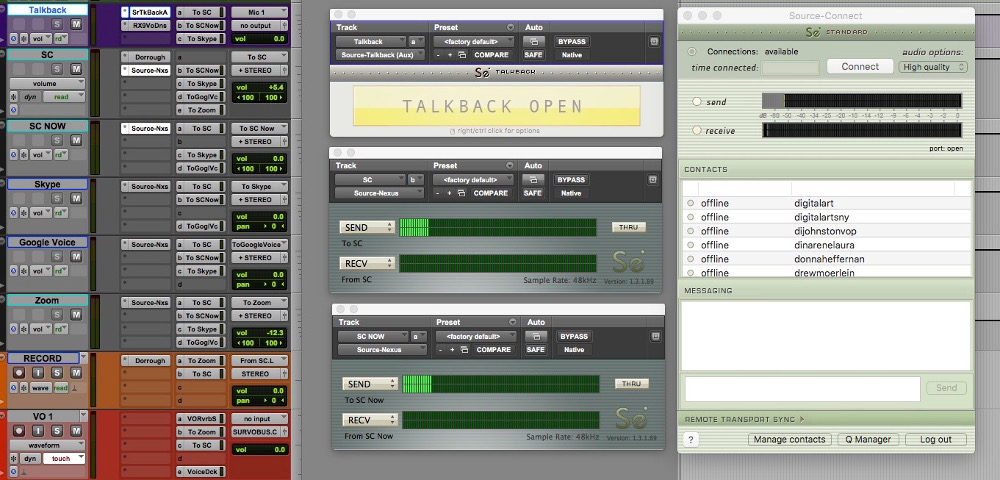
Source Element’s suite of plugins allows Verderosa to connect anything to anything for any sessions, including podcast episodes. Source Talkback, Source Nexus, and Source Connect Standard. His template keeps him ready for all possibilities.
With that in mind, I just went to Anchor.FM. The “Unsung” podcast will be available everywhere the day it drops. Everyday Odysseys is already available on Apple, Spotify, Google Podcasts and many more.
As for marketing, I’ll be using social media as best as I can. I have a Facebook page for the show. I’ll be sharing show notes, photos and more there. I’ll also be using YouTube for promotional videos. Having tested the waters with a few websites, a dedicated website is a likely next step.
What you have to understand is that I’m doing all of this on top of my full-time job as an audio engineer. And many of my nights are taken up consulting with voice actors and editing other people’s podcasts, demo reels, audio books and short films.
I love it all but I need more hours in the day. I’ve actually had to set aside some of my night work to make sure I can get this show out the door and sounding great.
Making it Work – No Matter What
I imagine you’ve had some interesting surprises along the way! Was there anything that threw you for a loop? How did you handle it?
Oh, there are always surprises! For example, while recording this 9/11 hero over Zoom with his headset mic during Hurricane Ida, there was a transformer explosion near his house and his power went out. So half the interview became a phone call instead of a Zoom call.
My job as a post production mixer is equal parts problem-solving and thinking outside the box. Podcasting in general is a game of “Let’s find a way to make this work.” The trick is to start with what the finished product should be and work backwards from there.
There are just so many factors: Guest location, technical abilities, recording ability, and on. I had lectured at a trade show in Washington, DC right before Covid, discussing podcasting quality versus content.
This brings me back to Gilbert’s show. As bad as the audio was in the beginning, there was no way I was going to miss an episode! If it’s something you care about, you’ll forgive bad audio for engaging content. As an audio engineer, I have to add “within reason.” There are some shows I just turn right off because it hurts to try to listen to.
I am hoping Everyday Odysseys and UnSung: The People You Don’t Know You Know! are compelling, engaging and produced at the highest quality they can be. That checks all the boxes for both content and quality.
— David Weiss is an Editor for SonicScoop.com, and has been covering pro audio developments for over 20 years. He is also the co-author of the music industry’s leading textbook on synch licensing, “Music Supervision, 2nd Edition: The Complete Guide to Selecting Music for Movies, TV, Games & New Media.” Email: david@sonicscoop.com
Please note: When you buy products through links on this page, we may earn an affiliate commission.







